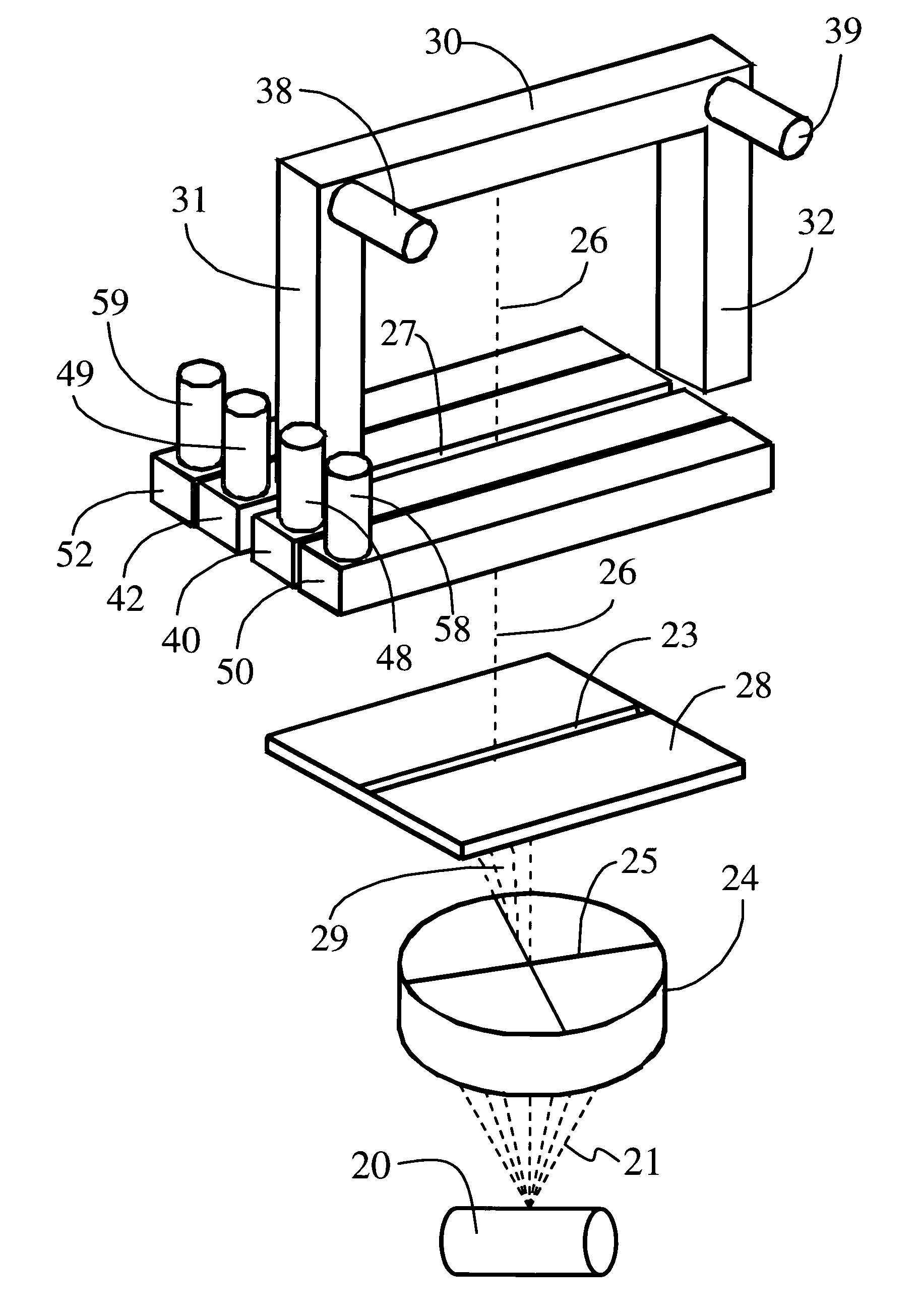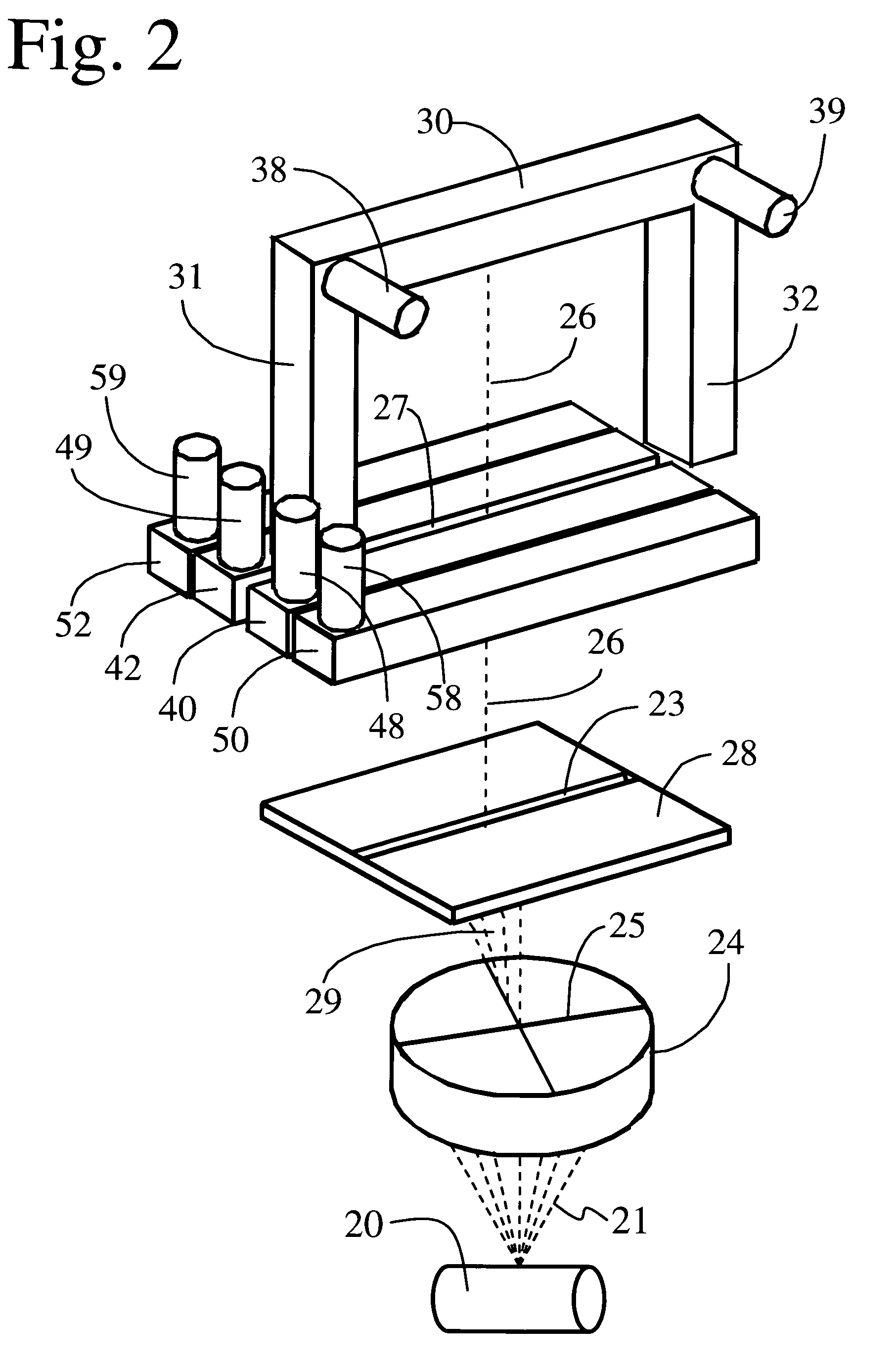Scanning X-ray inspection system using scintillation detection with simultaneous counting and integrating modes
a technology of x-ray inspection and simultaneous counting, applied in the field of x-ray screening systems, can solve the problems of poor resolution, high noise content, and less effective items for such items, and achieve the effects of reducing pixel-to-pixel cross-talk, fast and efficient, and enhancing discrimination of different materials
- Summary
- Abstract
- Description
- Claims
- Application Information
AI Technical Summary
Benefits of technology
Problems solved by technology
Method used
Image
Examples
Embodiment Construction
view of a scintillator detector system usable in the present system; FIG. 11B is a view of the detector system of FIG. 11A in side elevation;
[0037]FIG. 12A is a graphical plot of the output of a detector system processed in photon counting or integrating modes; FIG. 12B is a graphical plot in which the photon counting data of FIG. 12A are rescaled;
[0038]FIG. 13 is a graphical plot of multiplier factors used in connection with soft-switching incorporated in some embodiments of the invention;
[0039]FIG. 14 is a graphical plot of the data of FIG. 12A showing the effects of scaling and the multiplier factors of FIG. 13;
[0040]FIG. 15 depicts in side plan view a prototypical step wedge used in calibration of the present system;
[0041]FIG. 16 depicts a flow diagram of data processing providing edge enhancement in an operating mode of the present system;
[0042]FIG. 17 is a portion of computer code used to provide edge filtering in some embodiments;
[0043]FIG. 18 depicts a flow diagram of data p...
PUM
| Property | Measurement | Unit |
|---|---|---|
| θ | aaaaa | aaaaa |
| θ | aaaaa | aaaaa |
| sizes | aaaaa | aaaaa |
Abstract
Description
Claims
Application Information
 Login to View More
Login to View More - R&D
- Intellectual Property
- Life Sciences
- Materials
- Tech Scout
- Unparalleled Data Quality
- Higher Quality Content
- 60% Fewer Hallucinations
Browse by: Latest US Patents, China's latest patents, Technical Efficacy Thesaurus, Application Domain, Technology Topic, Popular Technical Reports.
© 2025 PatSnap. All rights reserved.Legal|Privacy policy|Modern Slavery Act Transparency Statement|Sitemap|About US| Contact US: help@patsnap.com



